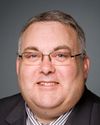Thank you, Mr. Chair.
With me are members from the PCO, Matthew Lynch and Jean-François Morin. I do have opening comments, if I may begin.
Mr. Chair, I am pleased to be before this committee this morning to discuss Bill C-20, the Fair Representation Act. Bill C-20 delivers on our government's long-standing commitment to move the House of Commons towards fair representation. In particular, it reflects our government's three distinct promises to provide fair representation by allocating an increased number of seats now and in the future to better reflect population growth in Ontario, British Columbia, and Alberta, maintaining the number of seats for smaller provinces, and maintaining the proportional representation of Quebec according to its population.
In my opening remarks today, I would like to provide an overview of the bill's key elements. I will then be pleased to take any questions you may have.
The representation of the provinces in the House of Commons is readjusted every 10 years using a formula established in section 51 of the Constitution Act, 1867. The current formula dates to 1985 and was designed to provide modest increases to the House of Commons. While the 1985 formula has been successful in limiting the size of the House of Commons, it has created a representation gap for the faster-growing provinces of Ontario, British Columbia, and Alberta. The combined effect of fixing the divisor at 279 in combination with the existence of the seat guarantees has prevented these provinces from receiving a share of the seats that is more in line with the relative share of the population.
The formula in Bill C-20 is principled and is a reasonable update designed to bring those provinces closer to representation by population while at the same time maintaining the seat counts of the slower-growing provinces and ensuring that Quebec maintains a level of seats that is proportionate to its population. In fact, the Fair Representation Act brings every single province closer to representation by population. The bill would set the electoral quotient for the 2011 readjustment at 111,166, which reflects the average riding population prior to the last seat readjustment in 2001, increased by the simple average of provincial population growth rates. Once the initial allocation of seats have been determined on the basis of that quotient, the Senate floor and the grandfather clause would be applied. The Fair Representation Act then provides the formula to apply a new representation rule.
If a province becomes underrepresented as a result of the application of the updated formula, additional seats will be allocated to that province so that its representation will equal its share of the population. Based on population estimates, Quebec will be the first province to receive new seats in order not to become underrepresented by the operation of the updated formula. That said, the representation rule applies to all provinces that may find themselves in this scenario.
A further update to the formula is to base the allocation of seats among the provinces on Statistics Canada's population estimates. There is a reason for that. The population estimates provide a more accurate picture of Canada's total population. The population estimates adjust to account for the census net under-coverage—that is, the number of people who were not enumerated during the census--as well as the over-coverage, coming from those who were enumerated twice.
The practical result of applying the new formula will be to add an additional 30 seats to the House of Commons, for a total of 338. In terms of the provincial breakdown, Ontario will receive 15 new seats, Alberta will receive six new seats, and British Columbia will receive six new seats. Quebec will receive three new seats as a result of the new representation rule, which will ensure that its seat total does not come under the number of seats proportionate to its population. Finally, the bill provides an adjustment to the formula in order to account for future increases in population counts following future censuses. For the 2021 and each subsequent readjustment, the bill provides that the electoral quotient will be increased by the simple average of provincial population growth rates since the preceding readjustment.
In addition to the updated formula for allocating seats, Bill C-20 also proposes amendments to the Electoral Boundaries Readjustment Act. The changes proposed in the bill aim to streamline the timelines and the current boundary readjustment process. For example, the independent boundary commissions would be established no later than six months following the census.
The timeline for the commissions to produce their reports would be streamlined from 12 to 10 months, with a possible two-month extension. The time period for the implementation of the representation order would be reduced from 12 months to seven months, and the notice period for public hearings by commissions would be reduced from a minimum 60-day period to a minimum 30-day period. There will be no change to the timelines relating to the parliamentary phase of the electoral boundary process, during which time parliamentarians and Canadians are able to provide their comments on the initial reports of the boundary commissions. Most importantly, Canadians will continue to have the same opportunity to voice their opinions on boundary changes during public hearings held by the commissions.
The updates to the Electoral Boundaries Readjustment Act follow recommendations made in the past by this committee, the chief electoral officer, and the Lortie commission.
To conclude, the Fair Representation Act addresses the unacceptable underrepresentation of some provinces and fulfills our government's longstanding commitment to move towards fair representation. The updated seat allocation formula contained in the Fair Representation Act moves every single province towards representation by population.
Thank you, and I look forward to responding to any questions you may have.




